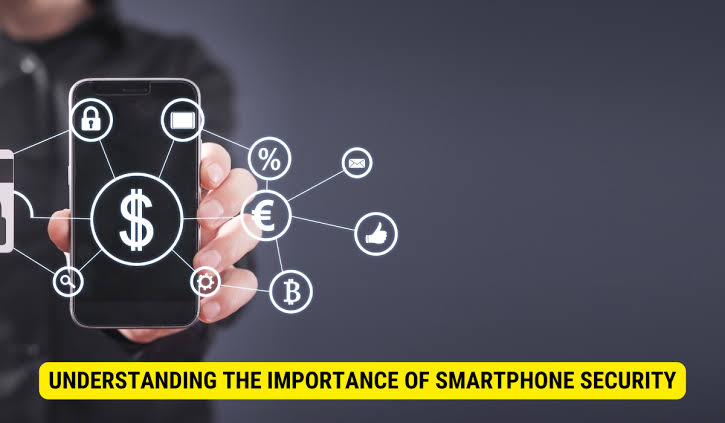In todays era smartphones have become a part of our daily routines. They function as our means of communication sources of entertainment and crucial storage repositories, for a wealth of information. The widespread use of smartphones highlights the need for ensuring security measures to safeguard personal data from various potential threats. When we explore the importance of security it becomes evident that protecting these devices is vital for upholding privacy preventing identity theft and maintaining cybersecurity.
The Growing Presence of Personal Data on Smartphones
Smartphones are no longer communication devices; they have evolved into mini computers capable of storing and managing a wide range of personal data. This includes contact information, emails, photos, videos, financial details, health records and access to social media platforms. With the proliferation of apps and services users often grant permissions that allow these applications to access information heightening the risks associated with device compromise.
Concerns About Privacy
Privacy is considered a right; however the convenience offered by smartphones sometimes causes users to underestimate the importance of securing their devices. Personal data stored on smartphones can reveal details, about an individuals life, preferences and behaviors.
If the security measures aren't adequate malicious individuals could misuse this information, for activities, like monitoring, intimidation or unauthorized data gathering.
Identity Theft and Fraud
One of the most alarming consequences of inadequate smartphone security is identity theft. When personal data falls into the wrong hands, it can be used to impersonate the victim, leading to fraudulent activities such as opening bank accounts, applying for credit cards, or making unauthorized purchases. The repercussions of identity theft can be long-lasting, causing financial loss and severe damage to one's credit score and reputation.
Cybersecurity Threats
Smartphones are prime targets for cybercriminals due to their extensive use and the valuable data they contain. Common cybersecurity threats include malware, phishing attacks, and man-in-the-middle attacks. Malware can be installed on smartphones through malicious apps or websites, allowing attackers to access personal information, monitor activities, and even take control of the device. Phishing attacks often involve deceptive messages or emails designed to trick users into revealing sensitive information such as passwords or credit card numbers. Man-in-the-middle attacks occur when attackers intercept communication between a smartphone and a legitimate service, gaining access to transmitted data.
The Role of Operating Systems and App Developers
Operating system (OS) developers, such as Apple and Google, play a crucial role in smartphone security. Regular OS updates often include security patches that address vulnerabilities discovered by researchers or exploited by attackers. Users should ensure their devices are running the latest OS version to benefit from these security improvements.
App developers also bear responsibility for ensuring their applications do not compromise user security. This involves implementing secure coding practices, conducting regular security audits, and providing updates to fix any discovered vulnerabilities. Users can enhance their security by downloading apps only from trusted sources like the Apple App Store or Google Play Store, which enforce stringent security standards for listed applications.
Best Practices for Smartphone Security
Given the numerous threats to smartphone security, it is imperative for users to adopt best practices to protect their personal data. Here are some key recommendations:
1. Use Strong Passwords and Biometrics
Setting a strong password or using biometric authentication (such as fingerprint or facial recognition) can prevent unauthorized access to the device. Avoid using easily guessable passwords or PINs.
2. Enable Two-Factor Authentication (2FA)
2FA adds an extra layer of security by requiring a second form of verification, such as a code sent to a registered phone number, in addition to the password.
3. Install Security Software
Security apps can provide real-time protection against malware, phishing, and other threats. They can also offer features such as remote wiping and locating the device if it is lost or stolen.
4. Regularly Update Software
Keeping the OS and apps up to date ensures that the latest security patches and features are installed, reducing the risk of exploitation through known vulnerabilities.
5. Be Cautious with Permissions
Before granting permissions to an app, consider whether it genuinely needs access to the requested data. Limiting permissions can minimize the risk of data leakage.
6. Avoid Public Wi-Fi for Sensitive Transactions
Public Wi-Fi networks are often insecure, making it easier for attackers to intercept data. Use a virtual private network (VPN) when accessing sensitive information over public networks.
7. Backup Data Regularly
Regular backups ensure that personal data can be recovered in case of loss, theft, or a security breach. This can be done using cloud services or local storage options.
The Role of Awareness and Education
While technology can provide tools and solutions to enhance smartphone security, user awareness and education are equally important. Understanding the potential risks and the importance of securing personal data empowers users to take proactive measures. Educational initiatives by governments, organizations, and tech companies can help raise awareness about best practices and emerging threats.
